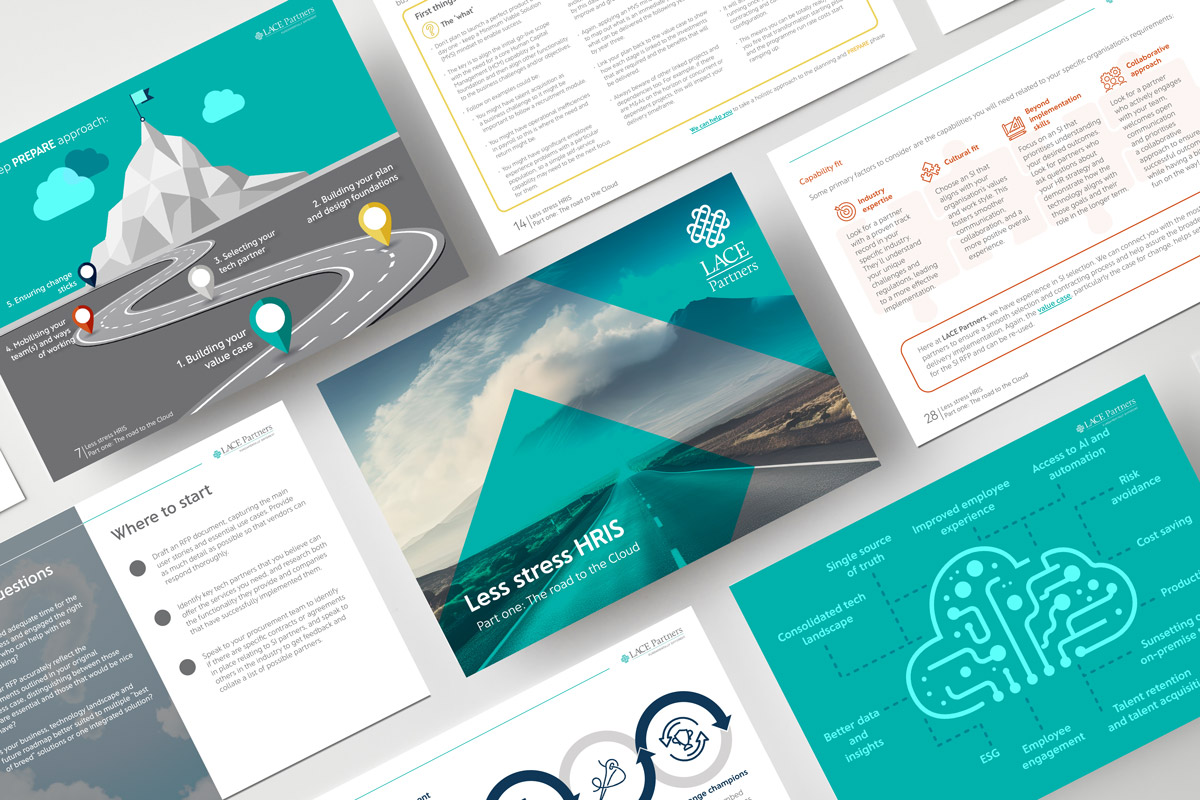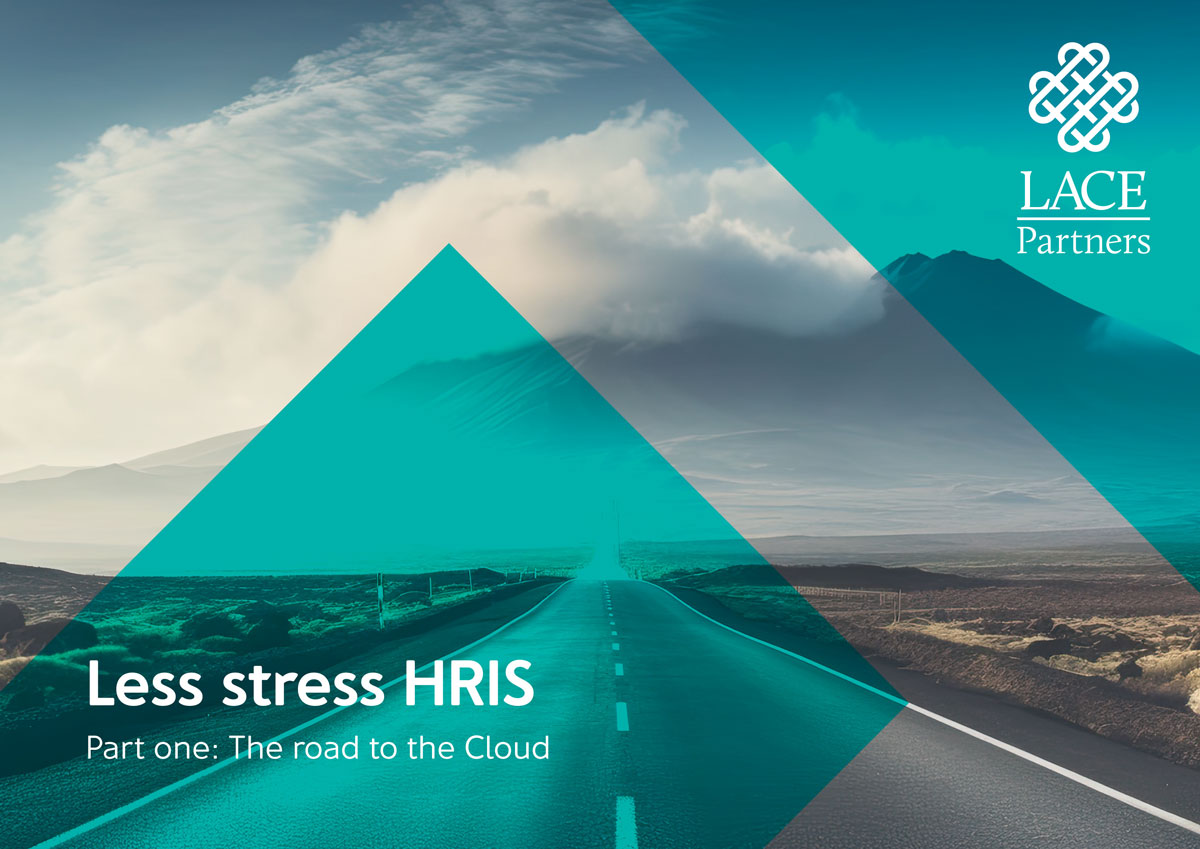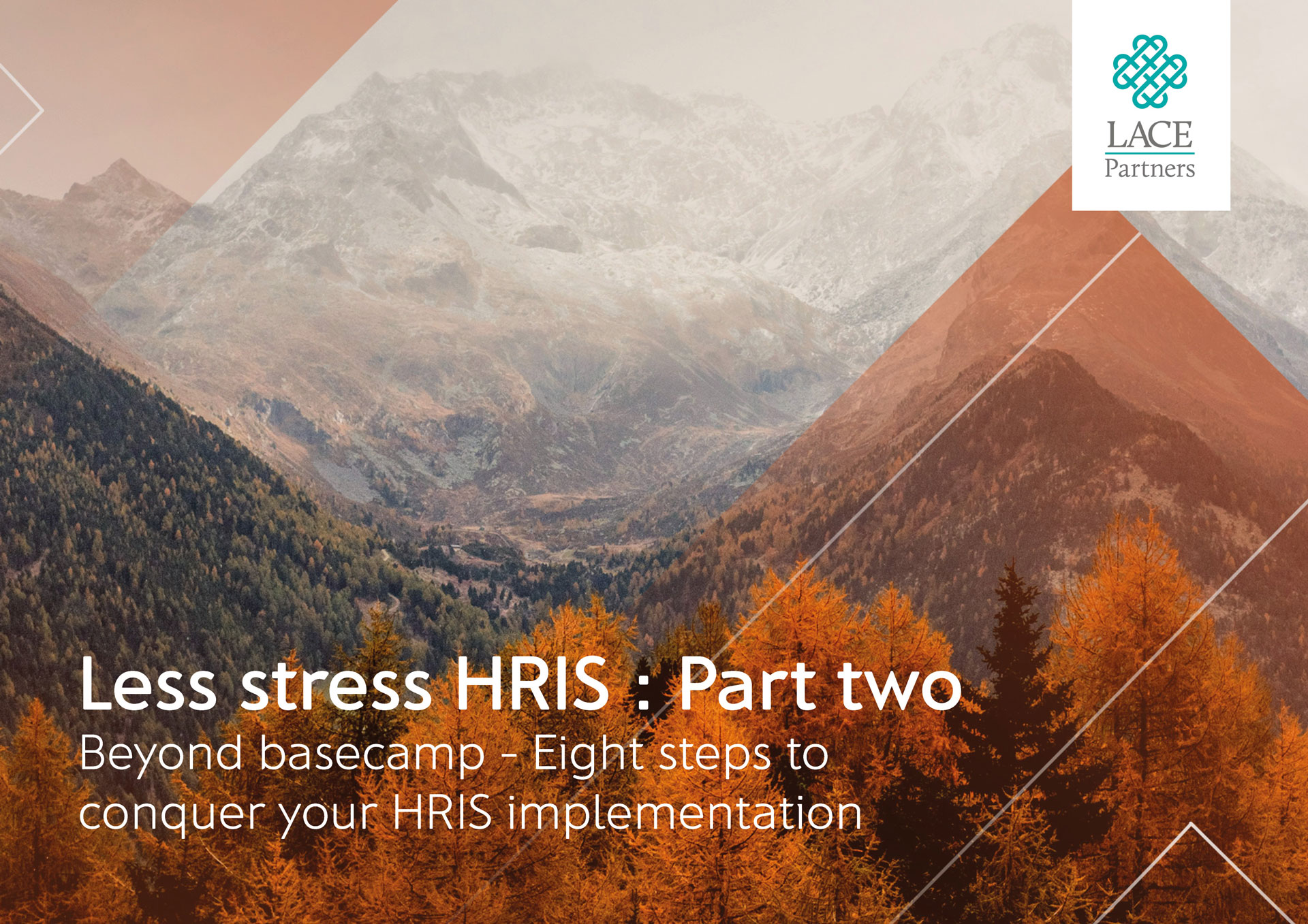Get it right: Preparing for a successful HRIS implementation
Implementing new HR technology can be daunting, but you don’t have to do it alone.
We often emphasise that successful HRIS implementation lies in the preparation. To ensure you don’t suffer from buyer’s remorse, you must consider financial benefits, EVP and EX, and infrastructure risks.
With all these elements to evaluate in an HR system decision and implementation – from building out the value case and gaining buy-in from the stakeholders to selecting the right software and partners and preparing the wider business for the broader change – our goal is to boost HR teams and Chief Technology Officers (CTOs) to PREPARE for the best start to a transformation journey.
If your key stakeholders share a clear common understanding of the destination you’re trying to reach and you’ve got someone prepared to fight your corner when times get hard, you’re already on the path to success.
Why go to the Cloud?
There are many benefits for a business to move to the Cloud:

What’s in this whitepaper?
What is most important is that you get your steps and plans in place to be able to deliver the perfect HRIS implementation that will ensure that you get return on investment (ROI) and value that delivers on your business objectives.
Having worked with a number of businesses on building out their approach to the perfect HRIS implementation, we’ve identified five steps that you should follow. These are listed below.
don't touch or delete
Step 1: Building your value case
Before undertaking any system implementation, you will need to build the case for change to really demonstrate to your C-Suite and senior stakeholders just why it is required and how it can add value to the business. A strong value case will draw out the key benefits and outputs of the new technology, covering everything from the financial impact to the improvements to productivity, operations and employee engagement.
Learn:
- What a value case is
- How to build your value case
- Elements to consider when choosing technology against your value case
Step 2: Building your plan and design foundations
When building your initial programme plan, it’s important to be realistic about ‘what’ you can achieve, ‘when’ you will be able to deliver it AND ‘how’ you will make and hold to key decisions to align the programme in the context of the wider business.
Learn:
- First things first – the ‘what’, the ‘when’ and the ‘how’
- The key design decisions (KDDs) to make
Step 3: Selecting your tech partner
Having a clear plan and timeline for the tech partner selection process and allowing time at each stage to be able to reflect and ask questions is key to making the right choice in the long run.
Learn to:
- Adopt a problem-first approach and focus on solving business problems rather than just implementing technology
- Evaluate through demonstrations
- Prioritise employee experience
- Build strategic partnerships
Step 4: Mobilising your team and ways of working
How you form your team and mobilise it is critical to success.
Learn more about the four key parties required to assure programme success, and how to be clear on the value, roles, and responsibilities up front.
Step 5: Ensuring change sticks
A key factor in the success of a technology implementation is the investment in change management. This involves more than just communication and training; it’s about fostering behavioral change, a new mindset, and tracking adoption to ensure the change sticks.
Learn:
- How to get clarity on your change strategy
- Listening and insights tools
- Communication and engagement techniques

Download a copy of the report through the form below:
Meet the authors
Sian Beacham
Client Executive Director
Sian is an HR Transformation specialist and global programme director with over 25 years of experience.
Before Sian joined LACE as an Executive Director in May 2022, she worked at Accenture and IBM and has held a number of senior client-side programme director roles at large global organisations. Sian has delivery execution experience across the full HR scope and lifecycle from strategy and design through to delivery, adoption and business case realisation.
Sian’s passions are the upfront definition and structuring of the approach to transformation, including all the critical ‘readiness’ work to ensure a Tx journey is successful AND how to build an engaged, collaborative and productive team (with an innovation and FUN factor!)
Becki Lovelady
Senior Consultant
Becki joined LACE Partners in July 2023 as a Senior Consultant with a passion for HR Transformation Programmes and People Analytics.
She has worked in-house in a range of analytics roles across Retail, Higher Education and the public sector, with a focus on process improvement and management information automation, growing analytics teams through strengthening data capability, and embedding data strategy and culture to provide effective insights solutions which drive strategy.
Becki has experience implementing people analytics in Oracle HCM, SAP SuccessFactors and ServiceNow, and supporting businesses in adopting a more self-serve model of reporting.




